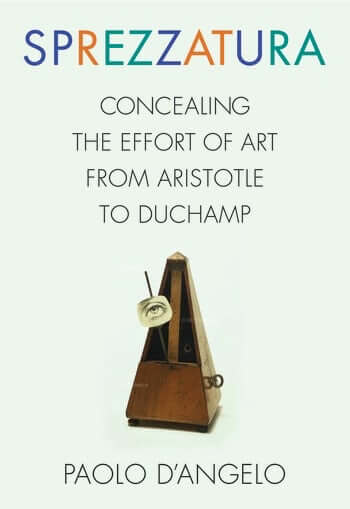Sprezzatura: Concealing the Effort of Art from Aristotle to Duchamp

A few days ago, Rachel Botsman wrote a short post on Linked In with an image with an equation: Confidence ≠ Competence.
This got me thinking about what I think of as the “fine line between confidence and arrogance” often linking it to when people say when they can do something and whether or not they actually can back up their words with their actions.
Chip Conley coined the term and literally wrote the book “Emotional Equations” (my post here), so I shared Rachel’s post with the thought expressed as an emotional equation: Arrogance = Confidence – Competence.
Following that, I wondered to myself “what is really the opposite of Arrogance” in terms of this equation. If your Competence is in excess of your Confidence then perhaps “Humility”, but I also wondered: “what word expressed someone with massive experience and ability but who can express it through their actions with great subtlety, with no need to “show off” or be recognised for their skills and impact.
As I mused on this, I wrote yesterday’s post “Effortless Effort“, then shared it to Twitter. to which OIi Barret replied:
A little googling and one definition of this untranslatable Italian word that struck me was: “The Art which conceals Art“
My instinct is that “Sprezzatura” is very much part of expressing the opposite of arrogance.
Part of this is linked back to (as I wrote about yesterday in Effortless Effort) the idea of being in Flow and the awareness that to get into that space, one typically has to have put in radically extreme levels of commitment and practice so as to be able to flow, perhaps to “Prepare, then throw away the script“.
Oli Barrett is a brilliant connector, speaker, host. My sense is that, over the years he has indeed put in an astonishing amount of focus and time into being as effortless as he appears at all he does.
David Ross, who inspired yesterday’s post, is a man who defies lables, but his “day job” is as an architect. I adore architecture, and the idea of “the art which conceals art” is something I love to sense in the most wondrous architectural designs, the design elements that you sense, you feel, rather than those that are saying “look at me!”.
As for me, I am 55 years into a lifelong journey of learning to be better, to be more. Oh, and to be less arrogant and more effortless.
In closing, in searching for an image for this post, I found this book, something to add to my reading list. Here is the synopsis:
Sprezzatura
Concealing the Effort of Art from Aristotle to DuchampPaolo D’Angelo, Columbia University Press
The essence of art is to conceal art. A dancer or musician does not only need to perform with ability. There should also be a lack of visible effort that gives an impression of naturalness. To disguise technique and feign ease is to heighten beauty. To express this notion, Italian has a word with no exact equivalent in other languages, sprezzatura: a kind of unaffectedness or nonchalance.
In this book, the first to consider sprezzatura in its own right, philosopher of art Paolo D’Angelo reconstructs the history of concealing art, from ancient rhetoric to our own times. The word sprezzatura was coined in 1528 by Baldassarre Castiglione in The Book of the Courtier to mean a kind of grace with a special essence: the ability to conceal art. But the idea reaches back to Aristotle and Cicero and forward to avant-garde works such as Duchamp’s ready-mades, all of which share the suspicion of the overt display of skill. The precept that art must be hidden turns up in a number of fields, from cosmetics to interior design, politics to poetry, the English garden to shabby chic. Through exploring different articulations of this idea, D’Angelo shows the paradox of aesthetics: art hides that it is art, but in doing so it reveals itself to be art and becomes an assertion about art. When art is concealed, it appears as spontaneous as nature—yet, paradoxically, also reveals its indebtedness to technique. An erudite and surprising tour through aesthetics, philosophy, and art history, Sprezzatura presents a strikingly original argument with deceptive ease.
